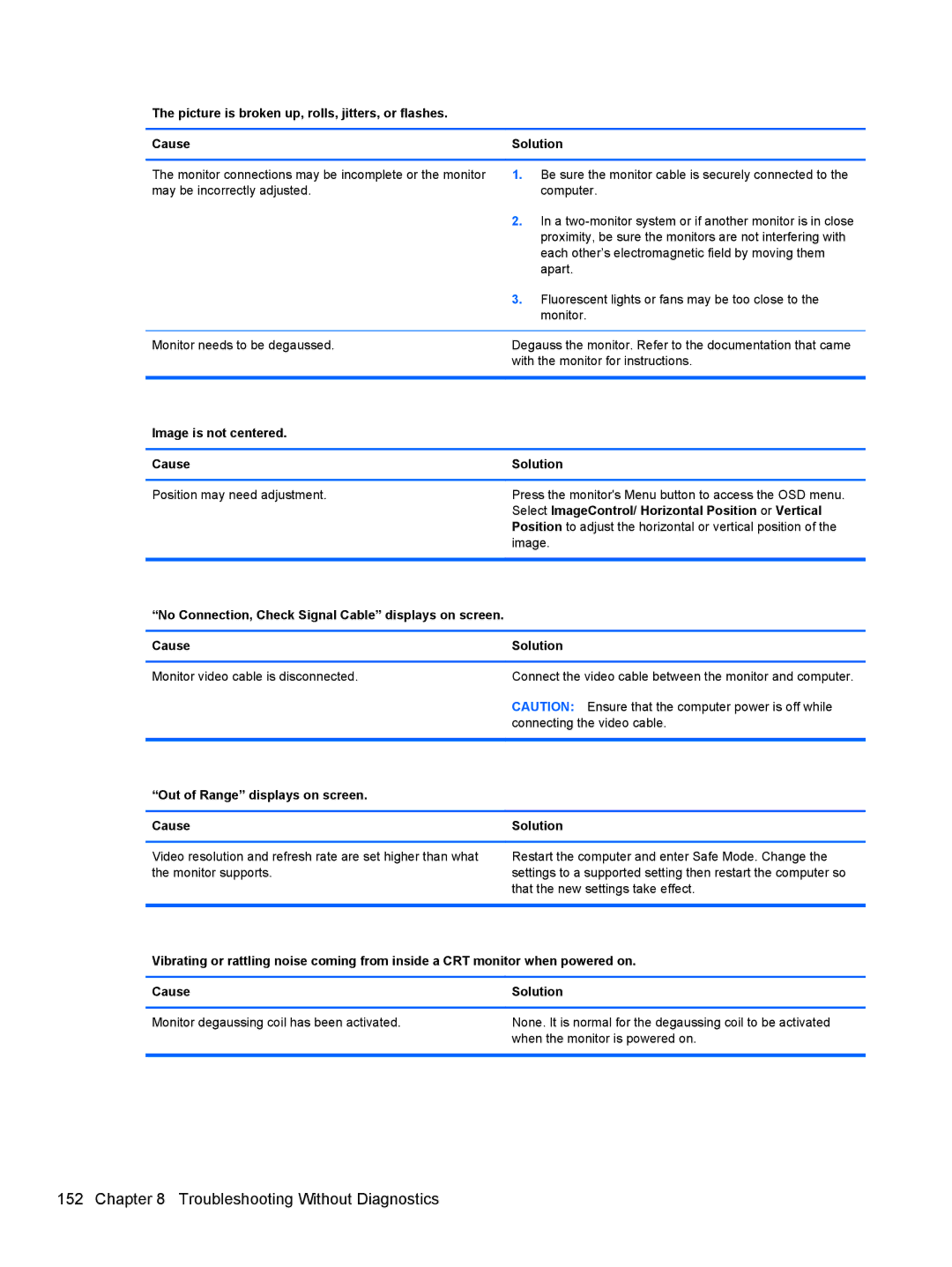
The picture is broken up, rolls, jitters, or flashes.
Cause | Solution | |
|
| |
The monitor connections may be incomplete or the monitor | 1. Be sure the monitor cable is securely connected to the | |
may be incorrectly adjusted. |
| computer. |
| 2. | In a |
|
| proximity, be sure the monitors are not interfering with |
|
| each other’s electromagnetic field by moving them |
|
| apart. |
| 3. | Fluorescent lights or fans may be too close to the |
|
| monitor. |
|
| |
Monitor needs to be degaussed. | Degauss the monitor. Refer to the documentation that came | |
| with the monitor for instructions. | |
|
|
|
Image is not centered. |
|
|
|
| |
Cause | Solution | |
|
| |
Position may need adjustment. | Press the monitor's Menu button to access the OSD menu. | |
| Select ImageControl/ Horizontal Position or Vertical | |
| Position to adjust the horizontal or vertical position of the | |
| image. | |
|
|
|
“No Connection, Check Signal Cable” displays on screen.
Cause | Solution |
Monitor video cable is disconnected.
Connect the video cable between the monitor and computer.
CAUTION: Ensure that the computer power is off while connecting the video cable.
“Out of Range” displays on screen.
Cause | Solution |
Video resolution and refresh rate are set higher than what the monitor supports.
Restart the computer and enter Safe Mode. Change the settings to a supported setting then restart the computer so that the new settings take effect.
Vibrating or rattling noise coming from inside a CRT monitor when powered on.
Cause | Solution |
Monitor degaussing coil has been activated.
None. It is normal for the degaussing coil to be activated when the monitor is powered on.
